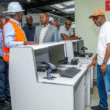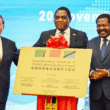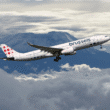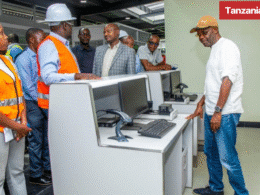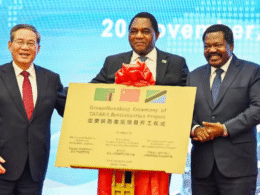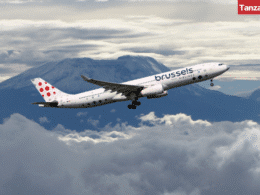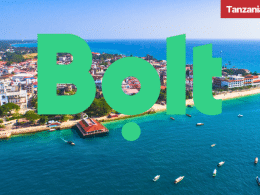The Tanzanian transport sector systems consist of surface transport (roads and railways), air transport, and sea and inland waterways (lakes and rivers) transport.
Tanzania’s transport sector rose by 55% in value during 2009–2014, from USD1.3b to USD2.1b, contributing 4.4% to the country’s GDP.
Main growth drivers include the increase in the number of passengers carried and freight handled through road transport.
Table of Contents
Tanzania Road Transport
Tanzania Rail Transport
Tanzania Air Transport
Tanzania Water Transport
Tanzania Sea Ports
Tanzania Lake Ports
Tanzania Latest Transport Projects
Tanzania Standard Gauge Railway Project
Tanzania Mwambani Port and Railway Corridor Project
WB Tanzania Intermodal and Rail Development Project
Tanzania Transport Sector Outlook
Tanzania Road Transport
Road transport is the most widely used form of transport in Tanzania, carrying over 90% of the passengers and 75% of the freight traffic in the country.
The road network in Tanzania currently comprises 86,472 km of roads, of which 12,786 km are trunk roads, 21,105 km are regional roads and the remaining 52,581 km are district, urban and feeder roads.
Tanzania’s Ministry of Works, Transport, and Communication through the Tanzania National Roads Agency (TANROADS) is managing the national road network of about 33,891km, comprising 12,786 km of trunk and 21,105 km of regional roads.
The remaining network of about 53,460km of urban, district and feeder roads is under the responsibility of the Prime Minister’s Office Regional Administration and Local Government (PMO-RALG).
As of 2013, 19% of Tanzania’s national roads (6,439.29km) and 2% of its district roads (1,069.2km) are paved.
Tanzania Rail Transport 
Railway transport is the second most important mode of transport after road and critical for long distance freight along the main transport corridors in Tanzania.
Tanzania has a total of 3,676km of railway lines operated by two railway systems, Tanzania Railways Corporation (TRC) and Tanzania – Zambia Railways (TAZARA).
The mainline of TRC comprises the central corridor between the port of Dar es Salaam in the east, linking central and western areas of the country and terminating at Kigoma on Lake Tanganyika in the west.
The TAZARA line is 1,860 km in length, of which 975 km is in Tanzania and 885 km in Zambia.
Tanzania Air Transport
The total number of air passengers in Tanzania increased by 62% in the past 5 years, from 2.1m in 2010 to 3.5m in 2015, while Tanzania’s cargo handling capacity rose by 7% during the same period, from 23,453t to 25,165t.
There are 58 airports and more than 300 private airstrips in Tanzania owned by mining companies and tour operators.
The Julius Nyerere International Airport (JNIA), located in Dar es Salaam, is the largest and busiest airport in Tanzania, accounting for over 70% of Tanzania’s air passengers with almost 2.5m in 2015.
JNIA also accounts for 80% of the country’s cargo capacity, which is expected to increase to 80,000t per year, starting May 2016, after the construction of a new cargo facility.
The Kilimanjaro International Airport (KIA), which serves travelers visiting Tanzania’s northern safaris, is the 2nd busiest airport in Tanzania with 780,800 air passengers in 2015.
According to the Tanzania Airports Authority (TAA), currently (2016), there are 21 airline operators on the JNIA. These include:
Air Tanzania is the flag carrier airline of Tanzania. In August 2016, the Government signed a purchase agreement for two Q400 aircrafts with Canadian manufacturer Bombardier, at the total cost of USD62m.
The purchase is part of the airline’s plan to expand in Tanzania and the African region.
According to the 2014 World Airport Summit, drivers of Tanzania’s air transport development include the growth of tourism, mining and economic activities.
Tanzania Water Transport
Tanzania has a coastline of about 720 km on the Indian Ocean, and also borders Lake Victoria, Lake Nyasa, and Lake Tanganyika.
Both sea and inland waterways ports in Tanzania are managed and operated by the Tanzania Ports Authority (TPA).
Tanzania Sea Ports
The TPA’s main Indian Ocean ports are Dar es Salaam, Mtwara, and Tanga. Minor seaports serving coastal traffic include Lindi, Kilwa Masoko, Mafia Island, Bagamoyo, Pangani and Kwale.
A new port is currently under development in the Bagamoyo Special Economic Zone (SEZ), 75 kilometres north of Dar-es-Salaam.
It will be run by the Tanzanian Government with China Holdings Limited and the State General Reserve Fund of Oman.
In addition to the port, this satellite town will include development of industrial parks, trade parks, technological parks, tourism industry, real estates, logistics centers, financial institutions and an airport.
Dar es Salaam is Tanzania’s principal port with intrinsic capacity of 10.1m t per year. The port handles over 92% of the total maritime ports’ throughput.
The port serves land linked countries of Malawi, Zambia, Democratic Republic of Congo, Rwanda, Burundi and Uganda.
These countries are connected to the port through two railway systems (TRL-1.0 metre gauge and TAZARA-1.067 cape gauge), road network as well as the TAZAMA oil pipeline to Zambia.
Tanzania Lake Ports
TPA also operates Tanzania’s lake ports, maintaining around 20 ports on Lake Victoria. Some major ports include Bukoba, Kemondo Bay,Musoma and Nansio.
Principal lake ports on Tanganyika include Kigoma and Kasanga. Additionally, there are 15 smaller ports along the lake.
These ports provide trade connections between Burundi, Eastern Democratic Republic of the Congo and Zambia.
Lake Nyasa has 4 important ports, at Itungi, Mbamba Bay, Liuli and Manda. There are up to 10 other smaller TPA ports on the lake that facilitate passenger movement along the lake and between the countries of Malawi, Mozambique and Tanzania.
Tanzania Latest Transport Projects
According to Tanzania’s 2025 Development Vision, investments in infrastructure, particularly in the development of the road network, are the Government’s top priority.
For this, in 2016/17 the government has budgeted TZS5.47t equivalent to 25.4% of the total budget excluding public debt service for infrastructure projects.
Tanzania Standard Gauge Railway Project
In July 2016, Tanzania signed a Memorandum of Understanding (MoU) for a USD7.6b loan with China’s Exim Bank for the construction of Tanzania’s standard gauge railway along the central corridor.
The railway project involves the construction of a standard gauge railway from Dar es Salaam-Tabora-Isaac-Mwanza, Tabora-Mpanda-Kalemela, Tabora-Kigoma and Uvinza-Isaac-Keza-Msongati.
The total length of the railway is 2,190 km. The construction process is set to start during the 2016–2017 fiscal year, according to the Government of Tanzania.
According to Makame Mbarawa, Tanzania’s Minister of for Works, Transport and Communications, the SGR project will be completed in 4 phases over the next 3 years.
Tanzania’s President Magufuli announced that the Government has already allocated around USD455m to the project from the 2016–2017 budget.
He also noted that the implementation of the SGR railway project will help lift the economy of Tanzania and its neighboring countries, including Uganda, Rwanda, Burundi, and Congo.
Tanzania Mwambani Port and Railway Corridor Project
The Mwambani Port and Railway Corridor (MWAPORC) is a project that seeks to develop a hub port and deep sea port in Tanga, connected to a railway to directly link the Indian Ocean with East and Central African markets.
The estimated cost of the project is over USD75b and includes the construction of the deep sea port and the heavy haul standard gauge railway to transport the crescent cargo’s traffic.
The MWAPORC Railway, also referred to as the East-West Economic Corridor Railway, is envisaged to be a 8,500 km high capacity standard gauge railway with a primary focus on the transportation of freight.
The new deep sea port will be designed to handle 8th generation 400-metre long ships. The aim of the project is to reduce logistic costs for importers and exporters to support Tanzania’s economic growth and human development.
In April 2015, Cuthbert Tenga, MWAPORC Director, announced that all the necessary documents to start the project have been secured.
According to the latest update on the project from October 2015, TPA has set aside funds in the fiscal year 2015–2016 to invite Expression of Interests (EOIs) from eligible companies for consultancy services to undertake a detailed study and engineering design aiming at the development of Mwambani area’s new port in Tanga.
WB Tanzania Intermodal and Rail Development Project
The World Bank (WB) also supports Tanzania in achieving its infrastructure development goals by providing grants and credits for projects.
In April 2014, the WB approved USD300m from the International Development Association (IDA) to support the Government of Tanzania’s effort to create a reliable open access railway infrastructure on the Dar es Saalam-Isaka section of the East African Central Corridor and to strengthen the countries rail agencies’ ability to manage the infrastructure, the traffic operations, and the network regulation.
According to the WB, the majority of infrastructure works will commence in 2017. The project is expected to be completed in July 2019.
The project has 4 components:
- Improvement of rail infrastructure includes the rehabilitation of key sections of the railway track and other infrastructure improvements to guarantee a reliable service between Dar es Salam Port and Isaka terminal.
- Rolling stock includes the procurement and leasing of locomotives and wagons.
- Development of Isaka terminal, Ilala terminal, and Dar es Salaam port platform comprises the development of intermodal container terminals in the port of Dar es Salaam, in Ilala and in Isaka to allow for more efficient modal transfers to and from the rail.
- Institutional strengthening and capacity building, which will support the project preparation and provide additional technical support to the implementing agency (IA) RAHCO, as well as support to Tanzania Railway Limited (TRL) and the Surface and Marine Transport Regulatory Authority (SUMATRA).
Philippe Dongier, former WB Country Director for Tanzania, said: “The project will […] indirectly help to boost agricultural trade, job creation and overall livelihoods for the country [Tanzania] and neighboring countries’ poorest people.”
In addition to these railway projects, TAZARA is planning to revitalize its operations by significantly improving its cargo traffic over the next year.
For this, TAZARA is currently reviewing the TAZARA Act of 1995 to allow private investments and commercialize the railway.
Tanzania Transport Sector Outlook
According to the Business Monitor International (BMI), improvements to Tanzania’s transport logistics network will be the main driver to the growth of the country’s construction industry over the next 10 years.
The forecast is based on the expected construction of the necessary export infrastructure, which will take place after 2020, the BMI indicates.
The economic opportunities arising from the improvement of Tanzania’s transport sector include: ease of market access, strengthening of competition, promotion of trade and export, tourism and foreign investment contribution to government revenue and generation of a large number of employment opportunities.


